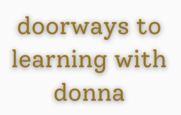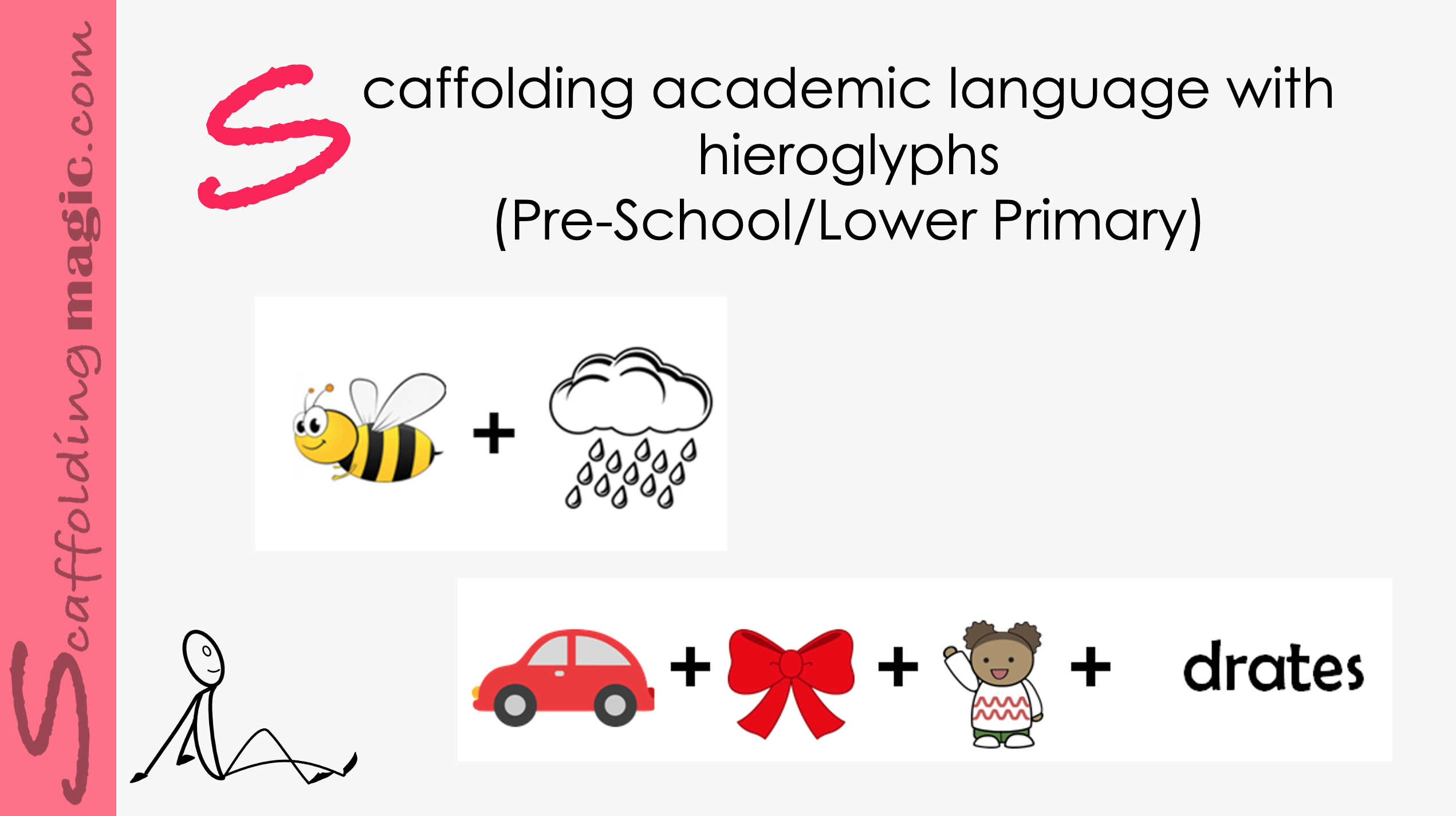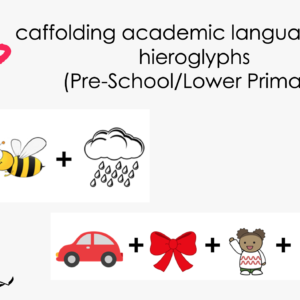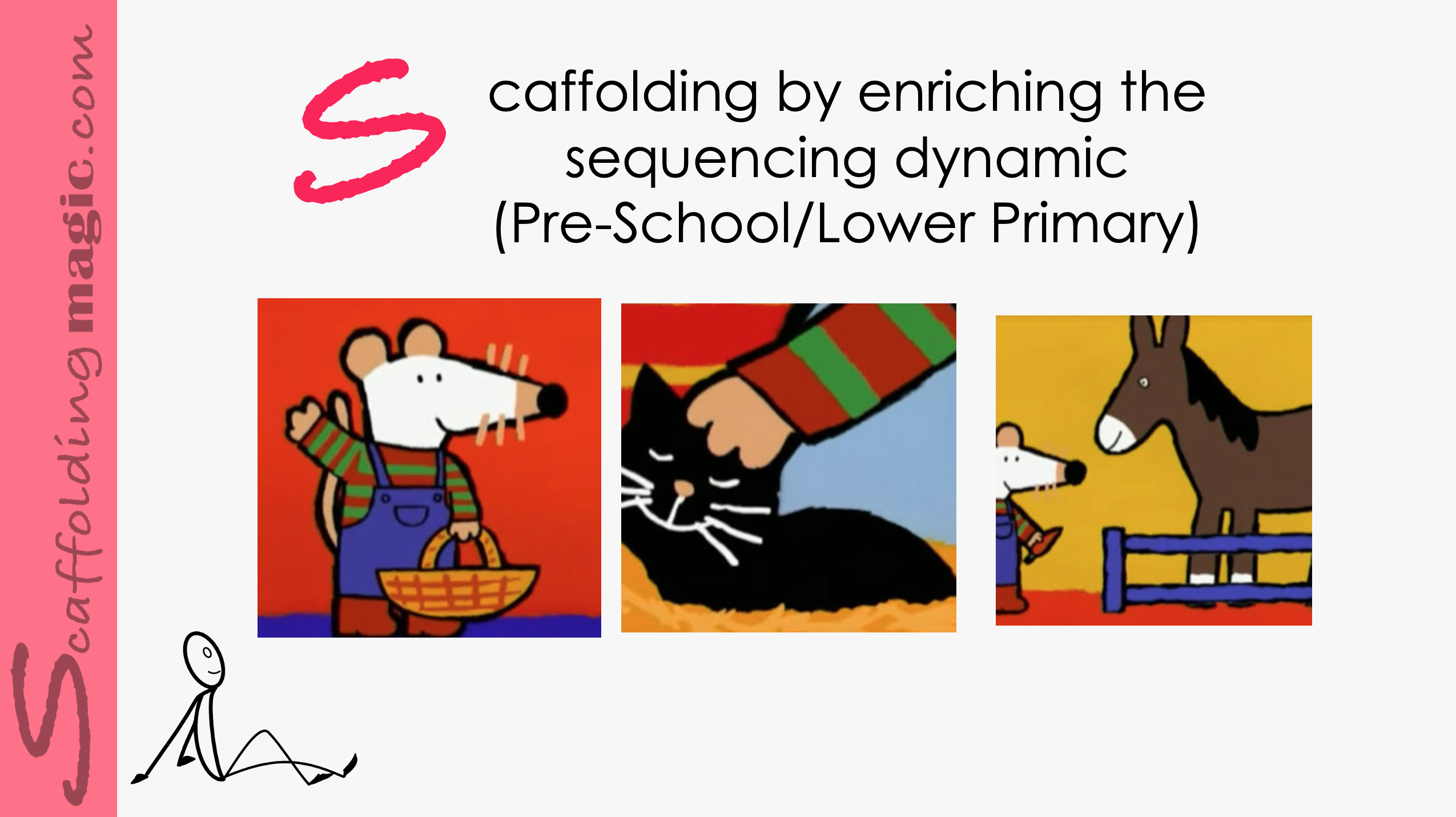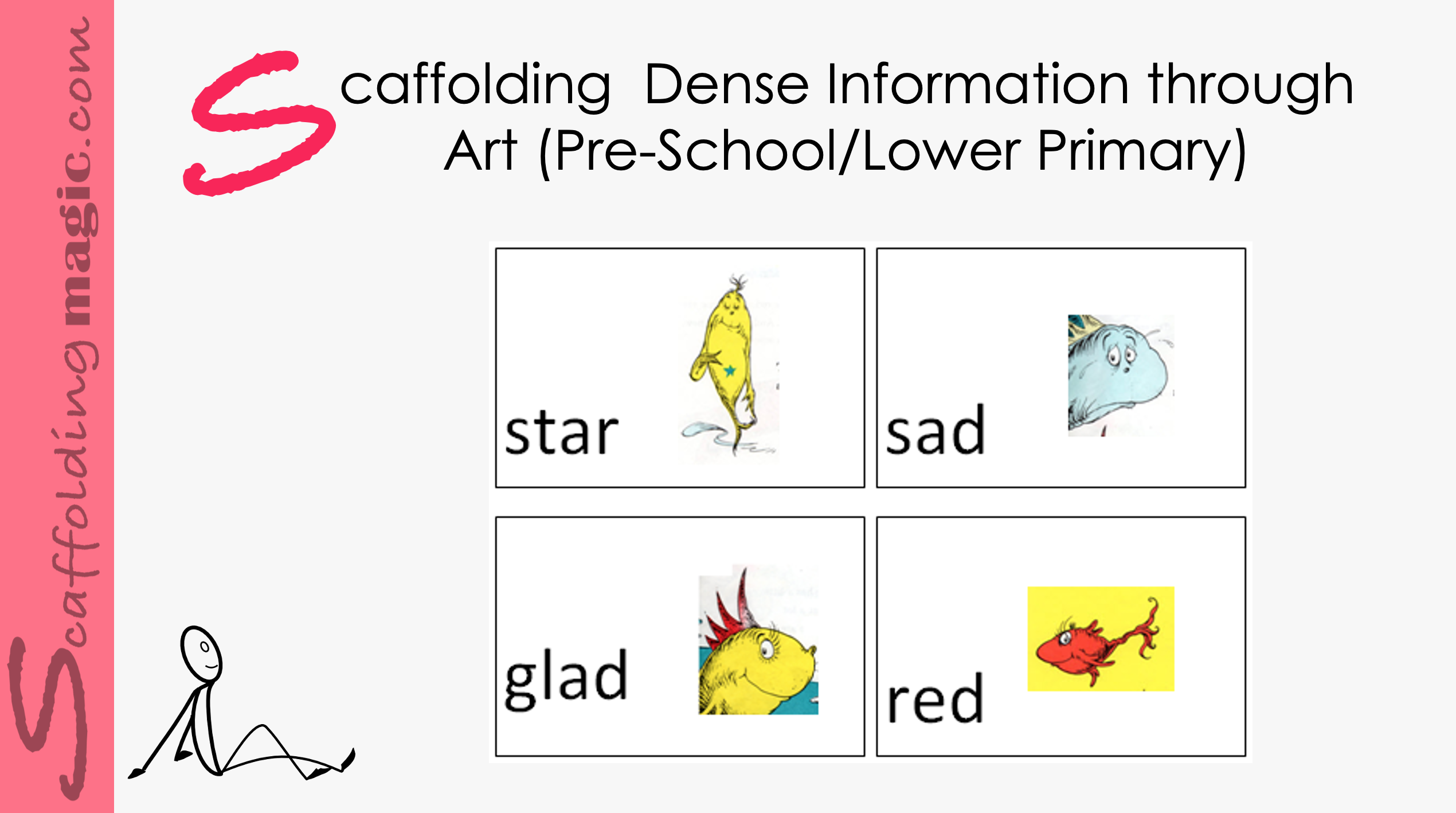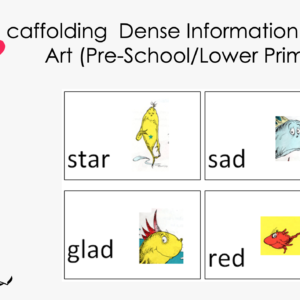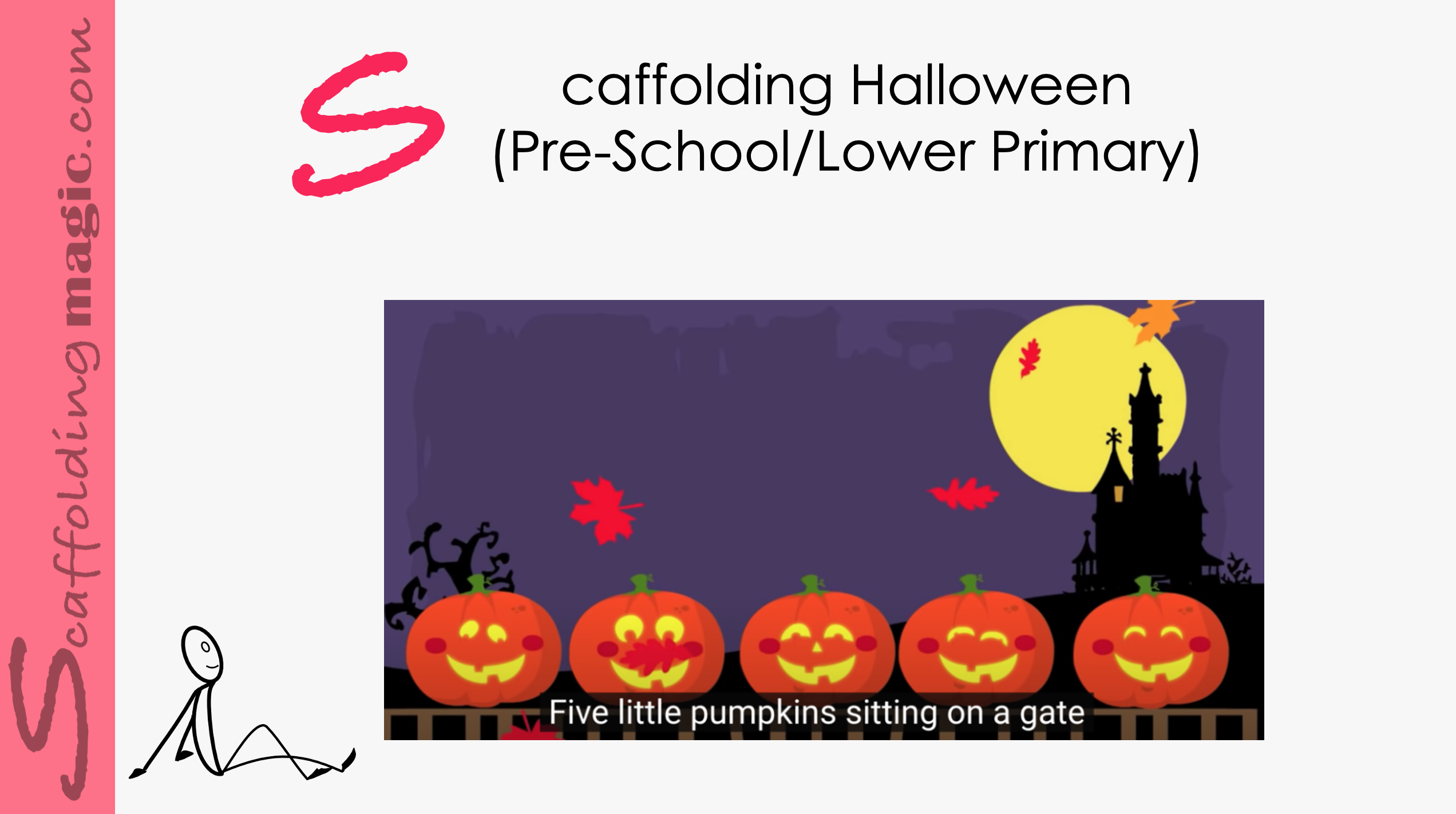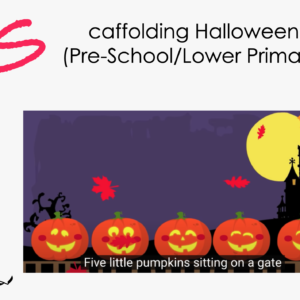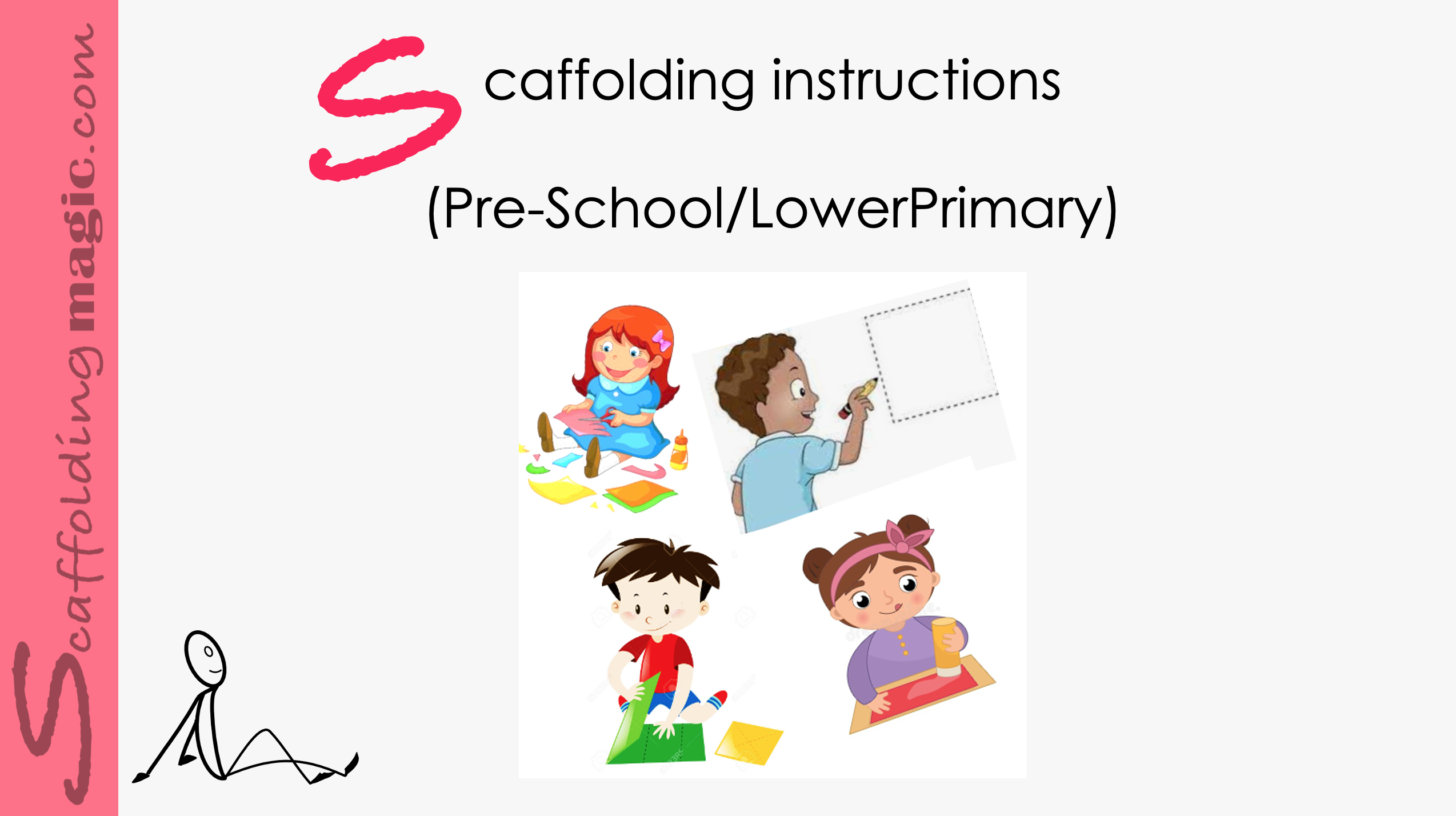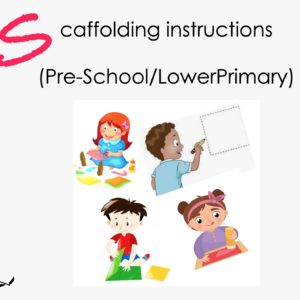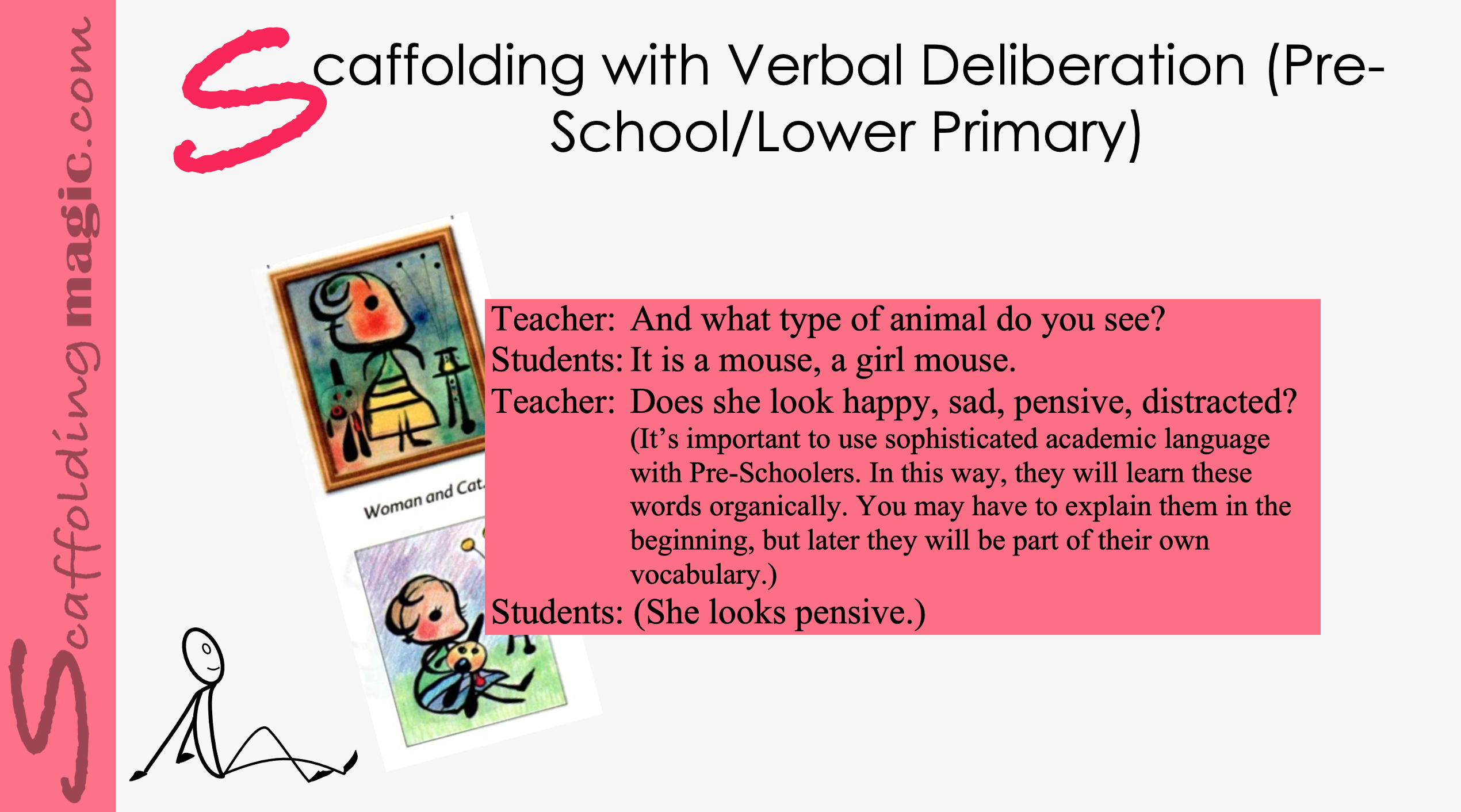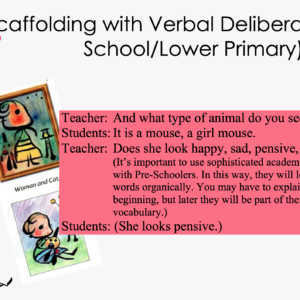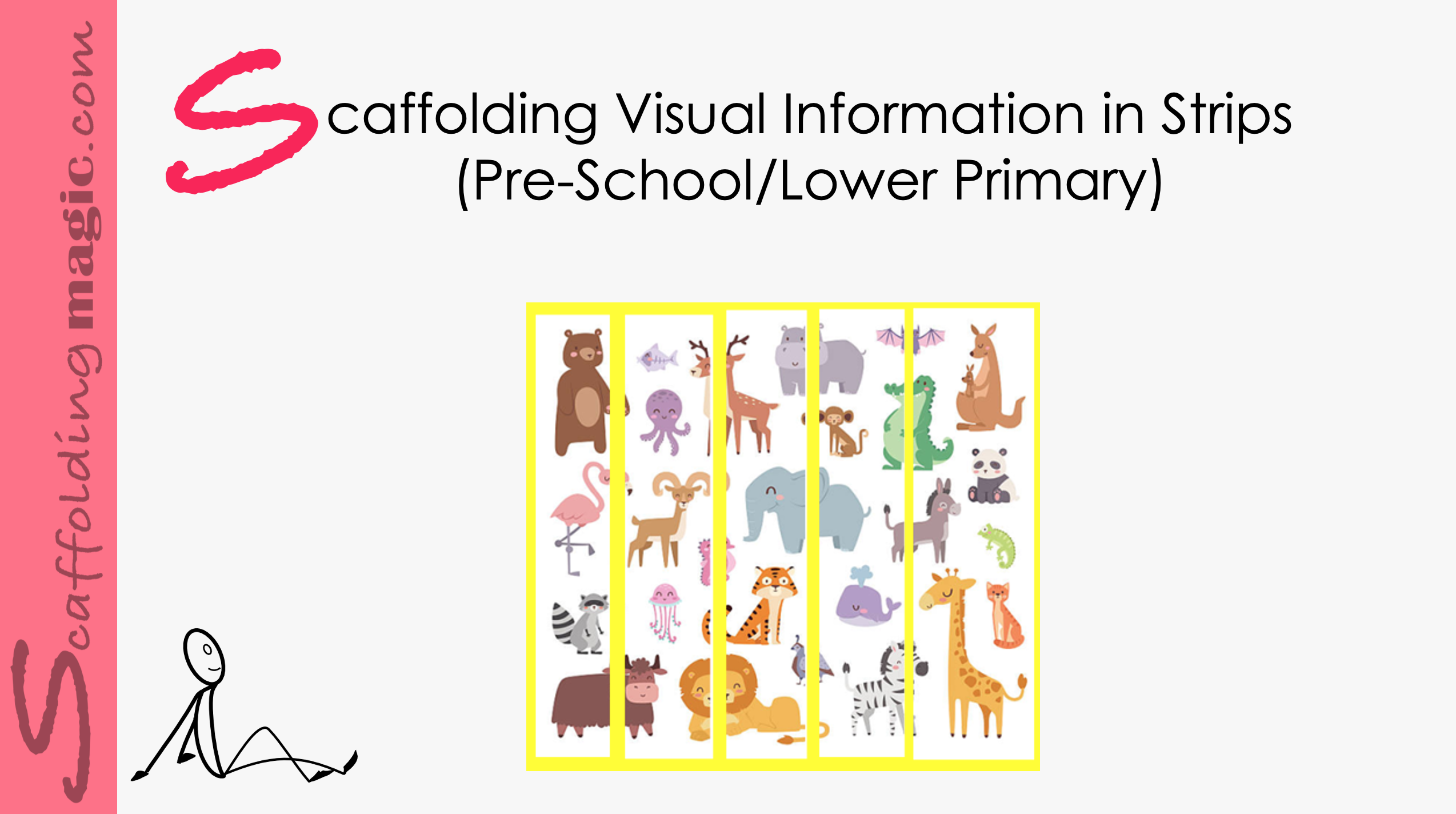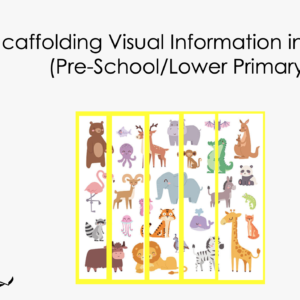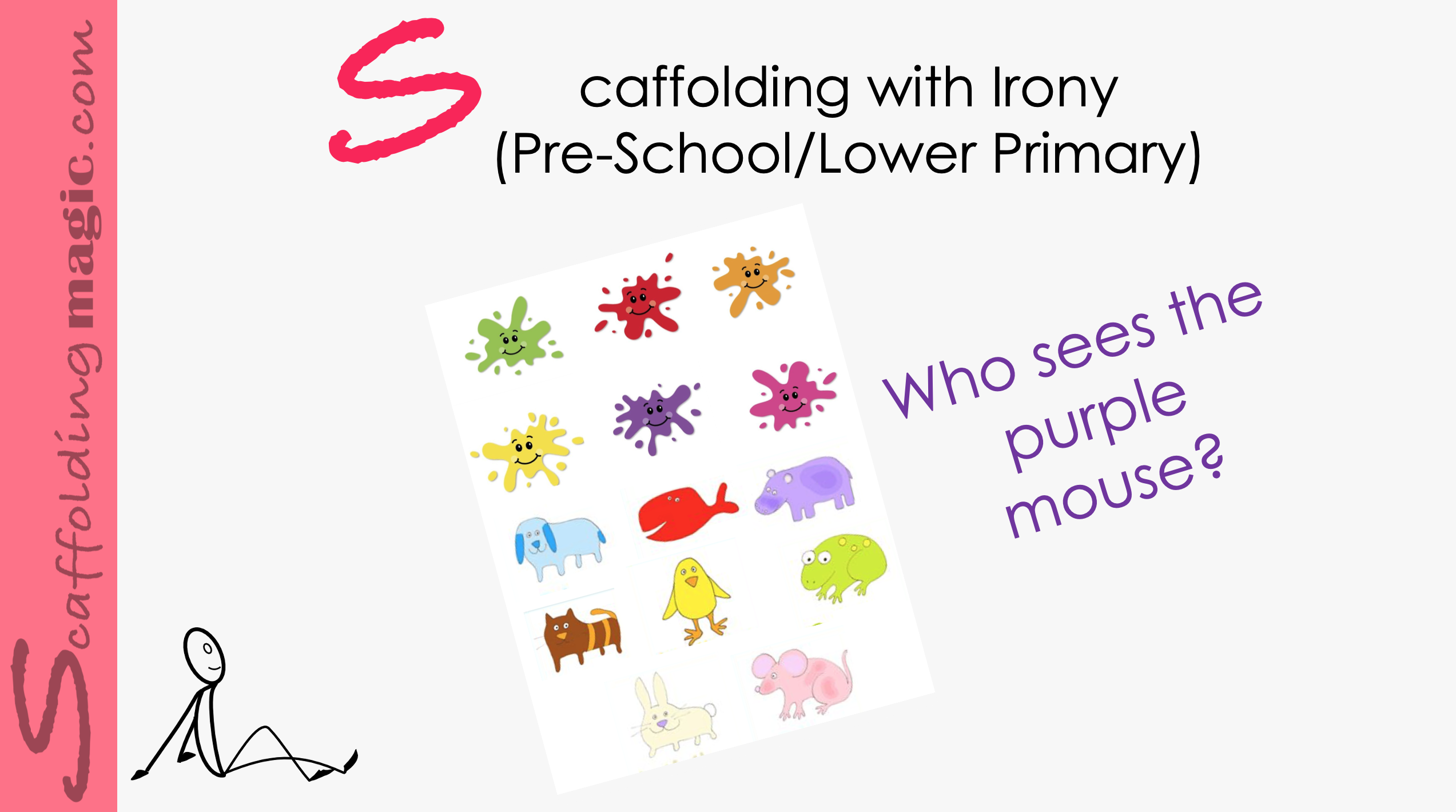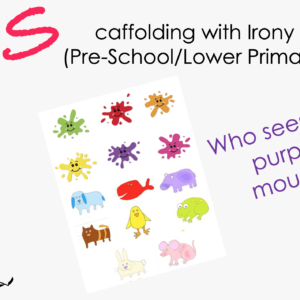Pre-School/Lower Primary Scaffods
Showing all 8 results
-
Pre-School/Lower Primary ScaffodsQuick View
Scaffolding Academic Language with Hieroglyphs (Pre-School/lower primary)
$5.00 Add to cart -
Pre-School/Lower Primary ScaffodsQuick View
Scaffolding by enriching the Sequencing dynamic (preschool/lower primary)
$5.00 Add to cart -
Pre-School/Lower Primary ScaffodsQuick View
Scaffolding Dense Information with Art (Pre-School/Lower Primary)
$5.00 Add to cart -
Pre-School/Lower Primary ScaffodsQuick View
Scaffolding Halloween (Pre-School/Lower Primary)
$5.00 Add to cart -
Pre-School/Lower Primary ScaffodsQuick View
Scaffolding Instructionsr (Pre-School/Lower Primary)
$5.00 Add to cart -
Pre-School/Lower Primary ScaffodsQuick View
Scaffolding Texts through Verbal Deliberation (Pre-School/Lower Primary)
$5.00 Add to cart -
Pre-School/Lower Primary ScaffodsQuick View
Scaffolding Visual Information in Strips (Pre-School/Lower Primary)
$5.00 Add to cart -
Pre-School/Lower Primary ScaffodsQuick View
Scaffolding with Irony (Pre-School/Lower Primary)
$5.00 Add to cart
Scaffolding Academic Language with Hieroglyphs (Pre-School/lower primary)
Educators and owners of academies who claim to teach critical thinking usually assume that it is a skill, like riding a bicycle, and that, like other skills, once you learn it, you can apply it in any situation. This has, in fact, not proven to be true. The process of thinking is intertwined with the content of thought – that is, domain knowledge. This is crucial in designing lessons that include critical thinking activities. It makes no sense to try to teach critical thinking devoid of factual content.* The trick, then, is to teach our students as many techniques as possible so that they have a toolbox of critical thinking skills that they can access in different context and the better and more efficient thinkers they will be in a wider context, even at the youngest ages.
Educators and owners of academies who claim to teach critical thinking usually assume that it is a skill, like riding a bicycle, and that, like other skills, once you learn it, you can apply it in any situation. This has, in fact, not proven to be true. The process of thinking is intertwined with the content of thought – that is, domain knowledge. This is crucial in designing lessons that include critical thinking activities. It makes no sense to try to teach critical thinking devoid of factual content.* The trick, then, is to teach our students as many techniques as possible so that they have a toolbox of critical thinking skills that they can access in different context and the better and more efficient thinkers they will be in a wider context, even at the youngest ages.
Scaffolding by enriching the Sequencing dynamic (preschool/lower primary)
Knowing the sequence of events in a story (in a book or in a video) is an important skill for young learners – in any language. In their first years of schooling, we need to specifically give our students the opportunities to be able to recognise and express this order, and the phrases to use to clarify sequences, so that the dynamic comes naturally to them later on in life
Knowing the sequence of events in a story (in a book or in a video) is an important skill for young learners – in any language. In their first years of schooling, we need to specifically give our students the opportunities to be able to recognise and express this order, and the phrases to use to clarify sequences, so that the dynamic comes naturally to them later on in life
Scaffolding Dense Information with Art (Pre-School/Lower Primary)
In this global environment, we need to help our students to develop as many skills as possible so that they are qualified for a myriad of situations. To do this, we create opportunities for them to learn through as many different learning styles as possible*. Some students in your class might be able to function in the classroom language linguistically without the need for other means of adaption. On the other hand, many of your students need visuals, audio, verbal, kinesthetics or physical interaction with the material – or any combination of these – to assimilate new knowledge.
In this global environment, we need to help our students to develop as many skills as possible so that they are qualified for a myriad of situations. To do this, we create opportunities for them to learn through as many different learning styles as possible*. Some students in your class might be able to function in the classroom language linguistically without the need for other means of adaption. On the other hand, many of your students need visuals, audio, verbal, kinesthetics or physical interaction with the material – or any combination of these – to assimilate new knowledge.
Scaffolding Halloween (Pre-School/Lower Primary)
Students don’t develop number sense by accident or even as a side effect of engaging in informal activities such as puzzles or songs – even those that, on the surface appear to be related to math. Experts insist that although every child can learn number sense, not every child will unless they intentionally and systematically participate in activities that promote the skill. This scaffold focus on that and so much more.
Scaffolding Instructionsr (Pre-School/Lower Primary)
Adding humour to a lesson is always a recipe for success. Humour changes the dynamic of the class and helps students to see their lessons from a different frame of mind. This scaffold uses irony to help make potentially dry material more inviting and accessible – irony being the highest form of humour.
Of course, there is very little ‘dry material’ in Pre-School classes, especially since Pre-School teachers bring so much energy to virtually anything you do in the classroom. Nevertheless, it’s always nice to remember that we can present new information in a variety of ways to keep our little learners on their toes! (I grew up with an entire extended family who thrived on challenging all its members – from the eldest to the youngest – through ironic statements and very straight faces. I believe that helped me question everything in a very healthy way!)
Adding humour to a lesson is always a recipe for success. Humour changes the dynamic of the class and helps students to see their lessons from a different frame of mind. This scaffold uses irony to help make potentially dry material more inviting and accessible – irony being the highest form of humour.
Of course, there is very little ‘dry material’ in Pre-School classes, especially since Pre-School teachers bring so much energy to virtually anything you do in the classroom. Nevertheless, it’s always nice to remember that we can present new information in a variety of ways to keep our little learners on their toes! (I grew up with an entire extended family who thrived on challenging all its members – from the eldest to the youngest – through ironic statements and very straight faces. I believe that helped me question everything in a very healthy way!)
Scaffolding Texts through Verbal Deliberation (Pre-School/Lower Primary)
Language is the most powerful, most readily available tool we have for representing the world to ourselves and ourselves to the world.* Up until three years of age, children organise information visually. After this turning point, they need to verbalise knowledge to understand it.* Presenting activities that give them the opportunity to verbalise what they see, helps them to develop more language.
The technique uses critical thinking and verbal deliberation to make connections with what seems impersonal. Our young students will be actively dialoguing with each other while they consider images, listen to songs, or stories and this helps their brains to remain active. In this way, they’ll remember the material more deeply and for longer. The example we give here is from an art lesson, and you’ll see how you can adapt it to whatever story you are going to present.
Scaffolding Visual Information in Strips (Pre-School/Lower Primary)
Chunking is the strategy of breaking down material into digestible proportions in order to avoid cognitive overload and help students to transition more easily into new information. When we add strategies that promote critical thinking, we’ve created an even more effective means of presenting new ideas to our students.
Chunking is the strategy of breaking down material into digestible proportions in order to avoid cognitive overload and help students to transition more easily into new information. When we add strategies that promote critical thinking, we’ve created an even more effective means of presenting new ideas to our students.
Scaffolding with Irony (Pre-School/Lower Primary)
Adding humour to a lesson is always a recipe for success. Humour changes the dynamic of the class and helps students to see their lessons from a different frame of mind. This scaffold uses irony to help make potentially dry material more inviting and accessible – irony being the highest form of humour.
Of course, there is very little ‘dry material’ in Pre-School classes, especially since Pre-School teachers bring so much energy to virtually anything you do in the classroom. Nevertheless, it’s always nice to remember that we can present new information in a variety of ways to keep our little learners on their toes! (I grew up with an entire extended family who thrived on challenging all its members – from the eldest to the youngest – through ironic statements and very straight faces. I believe that helped me question everything in a very healthy way!)
Adding humour to a lesson is always a recipe for success. Humour changes the dynamic of the class and helps students to see their lessons from a different frame of mind. This scaffold uses irony to help make potentially dry material more inviting and accessible – irony being the highest form of humour.
Of course, there is very little ‘dry material’ in Pre-School classes, especially since Pre-School teachers bring so much energy to virtually anything you do in the classroom. Nevertheless, it’s always nice to remember that we can present new information in a variety of ways to keep our little learners on their toes! (I grew up with an entire extended family who thrived on challenging all its members – from the eldest to the youngest – through ironic statements and very straight faces. I believe that helped me question everything in a very healthy way!)
